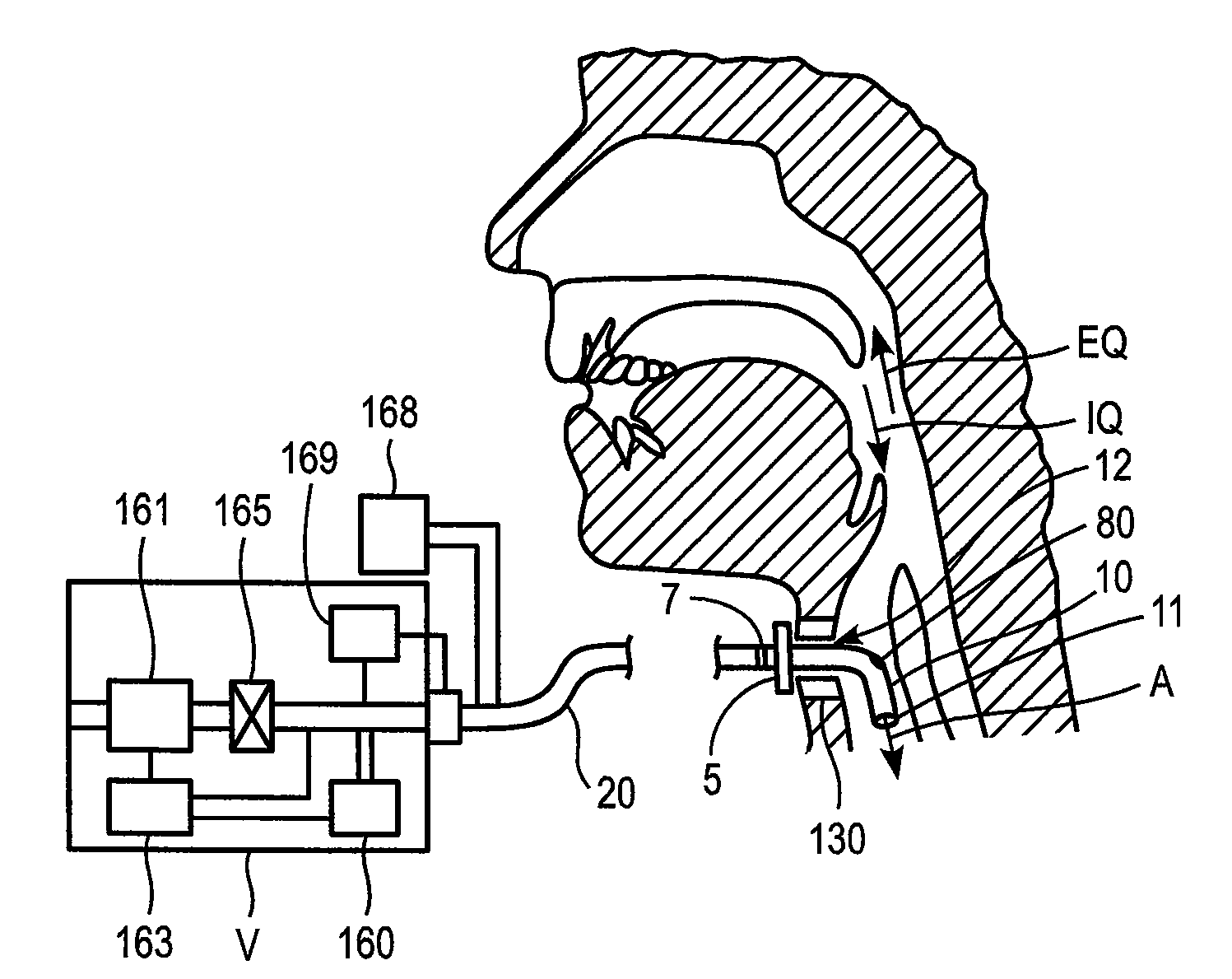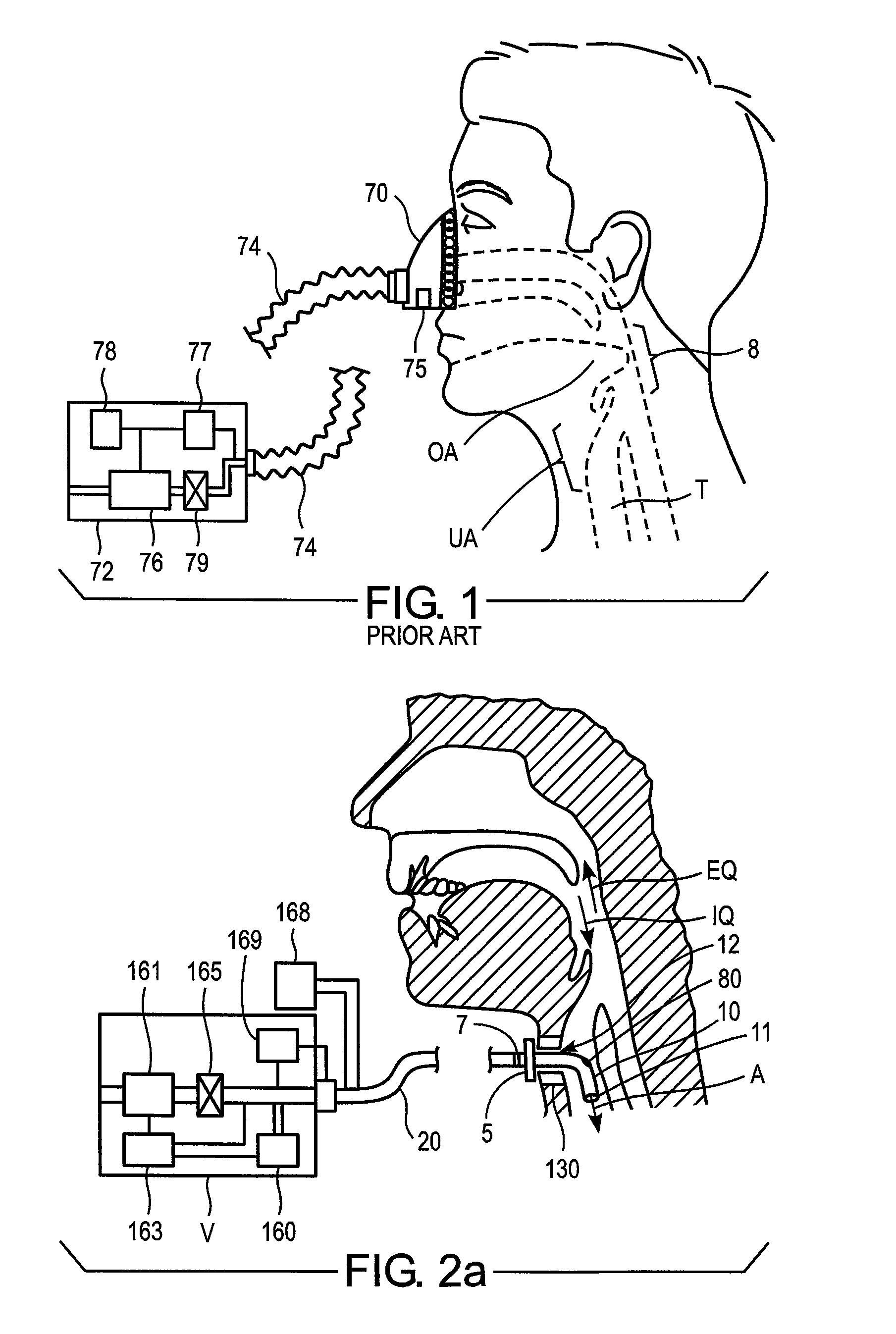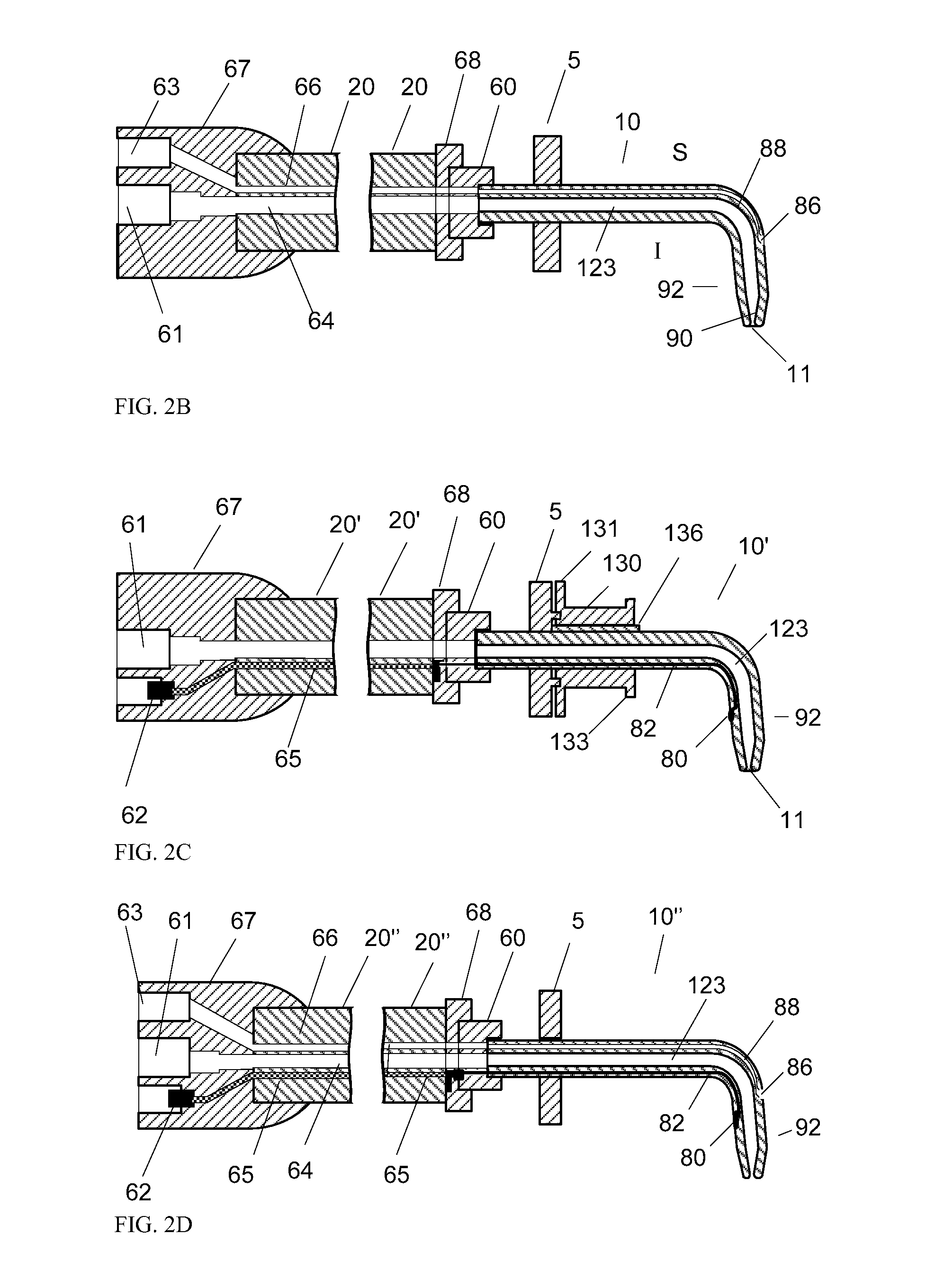Methods and devices for treating sleep apnea
a technology for sleep apnea and sleep apnea, applied in the field of ventilation therapy, can solve the problems of fragmented sleep, partial arousal to a lighter state of sleep, cardiovascular disease and other diseases, and achieve the effect of preventing obstruction, improving compliance and efficacy of therapy
- Summary
- Abstract
- Description
- Claims
- Application Information
AI Technical Summary
Benefits of technology
Problems solved by technology
Method used
Image
Examples
Embodiment Construction
[0167]FIG. 1 illustrates a continuous positive airway pressure (CPAP) system, which is the state-of-the-art therapy for treating obstructive sleep apnea (OSA). When an oropharyngeal obstruction 8 occurs, the patient can no longer breathe spontaneously through their mouth or nose. The oropharyngeal obstruction 8 may occur above a trachea (T) and an upper airway (UA). For treatment, CPAP is delivered with a CPAP ventilator 72, a CPAP single limb breathing circuit 74, and a CPAP ventilation mask 70 with one or more mask vent ports 75. Pressurized gas is delivered to the upper airway (UA) to prevent the oropharyngeal airway (OA) from obstructing. All of the gas being received by the lungs of the patient is received from the CPAP ventilator 72 because the CPAP system is a closed system. The pressurized gas is created by a pressure or flow generator 76, typically a blower, in the CPAP ventilator 72. During exhalation, the patient exhales through the one or more mask vent ports 75 and back...
PUM
 Login to View More
Login to View More Abstract
Description
Claims
Application Information
 Login to View More
Login to View More - R&D
- Intellectual Property
- Life Sciences
- Materials
- Tech Scout
- Unparalleled Data Quality
- Higher Quality Content
- 60% Fewer Hallucinations
Browse by: Latest US Patents, China's latest patents, Technical Efficacy Thesaurus, Application Domain, Technology Topic, Popular Technical Reports.
© 2025 PatSnap. All rights reserved.Legal|Privacy policy|Modern Slavery Act Transparency Statement|Sitemap|About US| Contact US: help@patsnap.com



